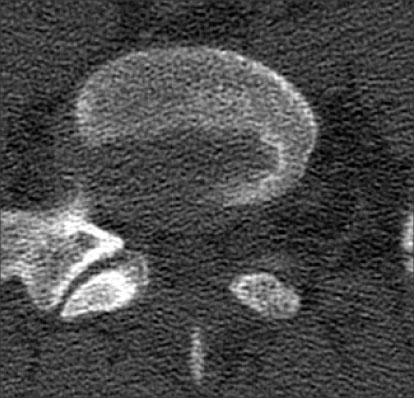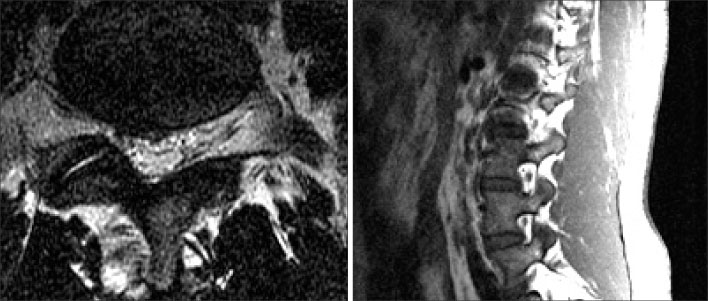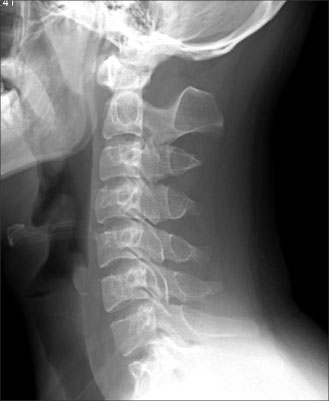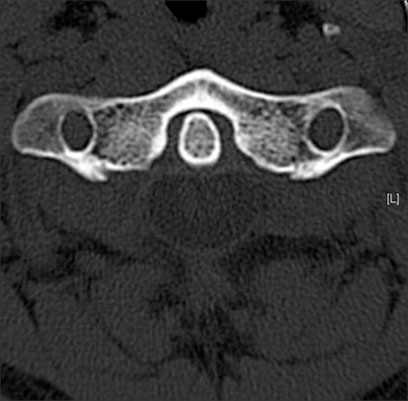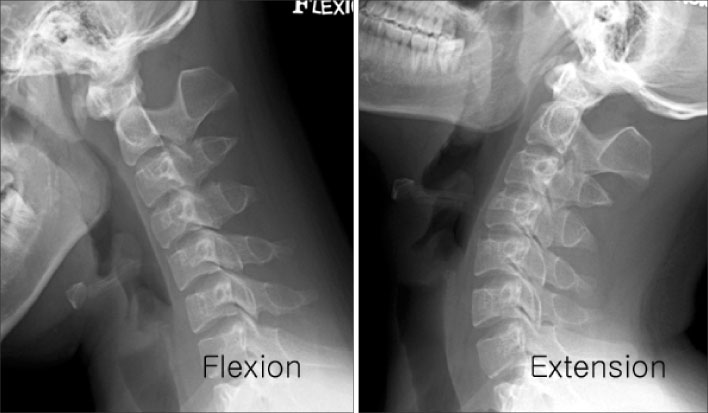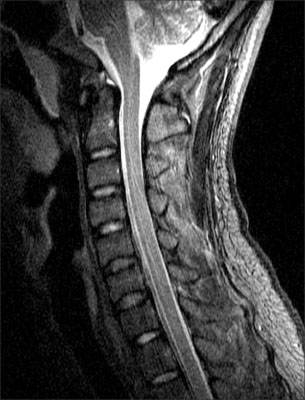J Korean Orthop Assoc.
2007 Aug;42(4):559-564. 10.4055/jkoa.2007.42.4.559.
Coincidental Congenital Absence of the Posterior Arch of the Atlas and the Unilateral Lumbosacral Articular Process: A Case Report
- Affiliations
-
- 1Department of Orthopedic Surgery, Ajou University College of Medicine, Suwon, Korea. chjeon@ajou.ac.kr
- 2Department of Orthopedic Surgery, Hallim Medical Center, Chuncheon, Korea.
- 3Department of Radiology, Ajou University College of Medicine, Suwon, Korea.
- KMID: 2186521
- DOI: http://doi.org/10.4055/jkoa.2007.42.4.559
Abstract
- We encountered a case of coincidental congenital complete absence of the posterior arch of the atlas and the unilateral lumbosacral articular process. A 21-year-old man presented with pain in the lower back and right buttock. The patient was a swimming coach. On plain radiography, computerized tomography and magnetic resonance imaging, the congenital absence of the unilateral lumbosacral articular process was noted. Six months later, the patient developed severe neck pain and suboccipital headaches without neurological signs. On plain radiography and computerized tomography, the congenital complete absence of the posterior arch of the atlas was noted. Magnetic resonance imaging showed no abnormal signs originating from the posterior spinal cord. There was no segmental instability. For this case, the lower back pain and neck pain were managed by conservative treatment. To the best of our knowledge, this is the first case of a coincidental congenital complete absence of the posterior arch of the atlas and the unilateral lumbosacral articular process.
MeSH Terms
Figure
Reference
-
1. Chandraraj S, Briggs CA. Multiple growth cartilages in the neural arch. Anat Rec. 1991. 230:114–120.
Article2. Currarino G, Rollins N, Diehl JT. Congenital defects of the posterior arch of the atlas: a report of seven cases including an affected mother and son. AJNR Am J Neuroradiol. 1994. 15:249–254.3. Fioraui-Gallotta G, Luzzatti G. Complete absence of the posterior arch of the atlas. Arch Ortop. 1955. 68:753–778.4. Geipel P. Zur kenntnis der Spina bifida das Atlas. ForstschrRontgenstr. 1930. 42:583–589.5. Ikeda K, Nakayama Y, Ishii S. Congenital absence of lumbosacral articular process: report of three cases. J Spinal Disord. 1992. 5:232–236.6. Keim HA, Keagy RD. Congenital absence of lumbar articular facets. A report of three cases. J Bone Joint Surg Am. 1967. 49:523–526.7. Logan WW, Stuard ID. Absent posterior arch of the atlas. Am J Roentgenol Radium Ther Nucl Med. 1973. 118:431–434.
Article8. Müller W. Ueber eine bemerkenswerte Form von Wirbelsaulen-missbildung. Munch Med Wchschr. 1932. 1:356.9. Roche MB, Rowe GG. Anomalous centers of ossification for inferior articular processes of the lumbar vertebrae. Anat Rec. 1951. 109:253–259.
Article10. Soham G, Mohammed A. Posterior arch defect of the atlas: Significance in trauma and literature review. Eu J Em Med. 2003. 10:238–240.
- Full Text Links
- Actions
-
Cited
- CITED
-
- Close
- Share
- Similar articles
-
- Congenital Hypoplasia of the Posterior Arch of the Atlas Associated with a Fracture of the Odontoid Process: A Case Report
- Congenital Anomaly of the Atlas Misdiagnosed as Posterior Arch Fracture of the Atlas and Atlantoaxial Subluxation
- Cerebellar Ectopia Associated with Unilateral Agenesis of Posterior Arch of Atlas
- The Absent Lumbar Articular Process of the 4th Lumbar Vertebra: One Case Report
- Congenital Absence of Unilateral Lumbar Articular Process: A Case Report


